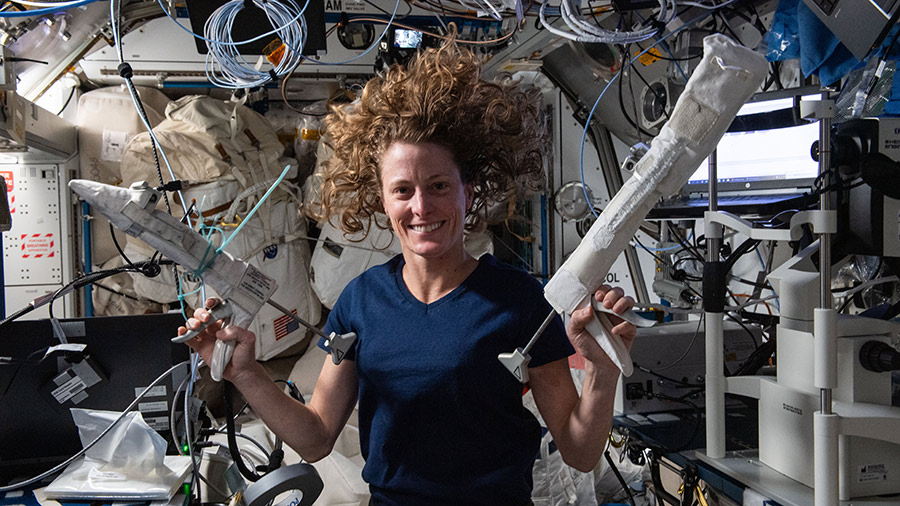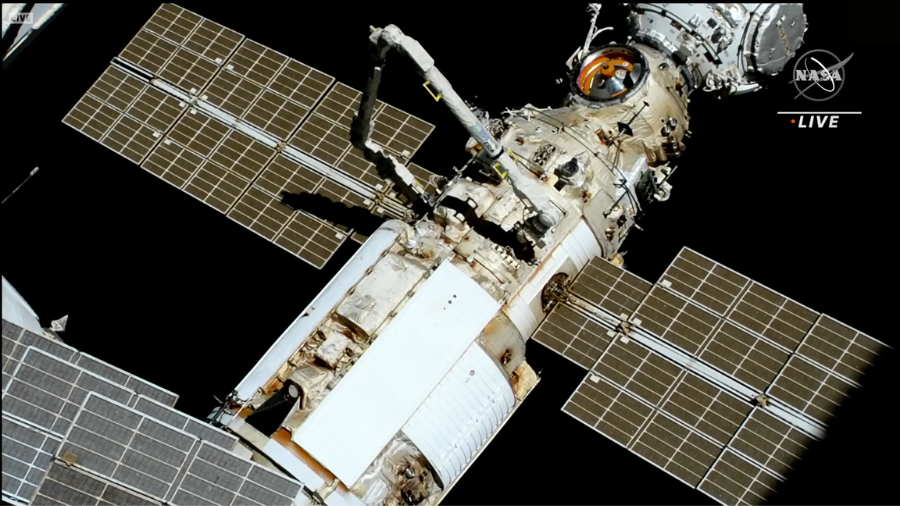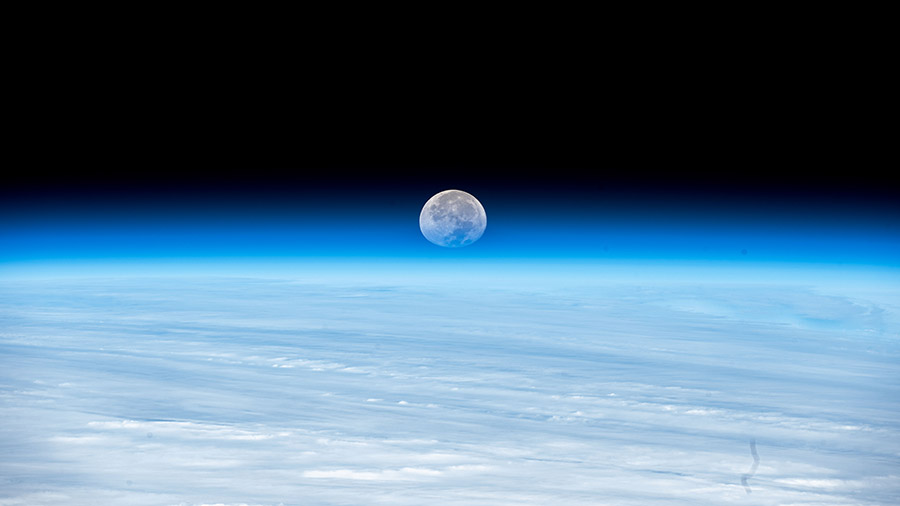
The Expedition 70 crew worked throughout Tuesday on space physics and human research aboard the International Space Station. Two astronauts are also gearing up for a spacewalk on Thursday to determine if microorganisms can survive the harsh environment of outer space.
Tuesday morning, the orbital residents focused their science activities on a variety of physics research hardware. NASA astronaut Loral O’Hara installed new components and reconnected power and data cables on the Cold Atom Lab, a device that observes the quantum behavior of atoms chilled to near absolute zero. Flight Engineer Satoshi Furukawa of JAXA (Japan Aerospace Exploration Agency) set up combustion experiment gear in the Kibo laboratory module to study how microgravity affects flames and improve fire safety on spacecraft.
O’Hara then joined fellow NASA Flight Engineer Jasmin Moghbeli in the Columbus laboratory module for vein scans. Moghbeli operated the Ultrasound 2 device and scanned O’Hara’s neck, shoulder, and leg veins with assistance from doctors on the ground.
At the end of the day, both astronauts joined up with Furukawa and Commander Andreas Mogensen of ESA (European Space Agency) and discussed robotics procedures planned for Thursday’s spacewalk. Moghbeli and Furukawa will be at the controls of the Canadarm2 robotic arm assisting O’Hara and Mogensen when they exit the station on Thursday for a six-hour spacewalk that starts at 10 a.m. EDT.
Mogensen and O’Hara earlier worked in the Quest airlock organizing the spacewalking tools they will use on Thursday to swab station surfaces and determine if microbes can live in the external conditions of microgravity. Moghbeli and Furukawa trained on a computer for the robotics maneuvers necessary to support the spacewalkers.
Two cosmonauts worked on a pair of technology studies exploring 3D printing and space navigation on Tuesday. Flight Engineer Nikolai Chub tested the on-demand manufacturing, or 3D printing, of tools in microgravity to help crews become less dependent on supplies launched from Earth. Flight Engineer Konstantin Borisov photographed landmarks on Earth for an experiment collecting data to improve high-precision data for determining the location of the space station.
Veteran cosmonaut Oleg Kononenko spent Tuesday working inside the Progress 85 (85P) cargo craft docked to the aft port of the Zvezda service module. The five-time station visitor first transferred water stowed inside the 85P into liquid containers aboard the Roscosmos segment of the orbiting lab. Afterward, Kononenko unpacked cargo from the 85P, stowed the new supplies in the appropriate station modules, and updated inventory systems.
The coolant leak from a backup radiator on the station’s Nauka Multipurpose Laboratory Module (MLM) has ceased, as was reported by Roscosmos flight controllers and evidenced by NASA external station camera views, which show only residual coolant droplets.
The primary radiator on Nauka continues to work normally, providing full cooling to the module with no impacts to the crew or to space station operations.
The radiator was delivered to the space station on the Rassvet module during space shuttle mission STS-132 in 2010. It was transferred to the Nauka during a Roscosmos spacewalk in April.
Teams on the ground continue to investigate the cause of the leak, and additional updates will be made as available.
Learn more about station activities by following the space station blog, @space_station and @ISS_Research on X, as well as the ISS Facebook and ISS Instagram accounts.
Get weekly video highlights at: https://roundupreads.jsc.nasa.gov/videoupdate/
Get the latest from NASA delivered every week. Subscribe here: www.nasa.gov/subscribe




